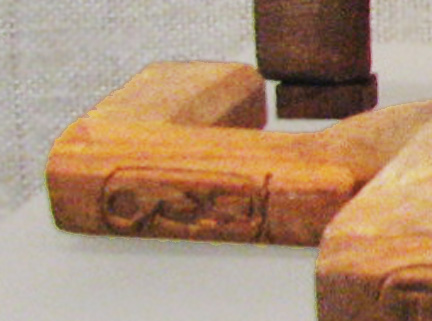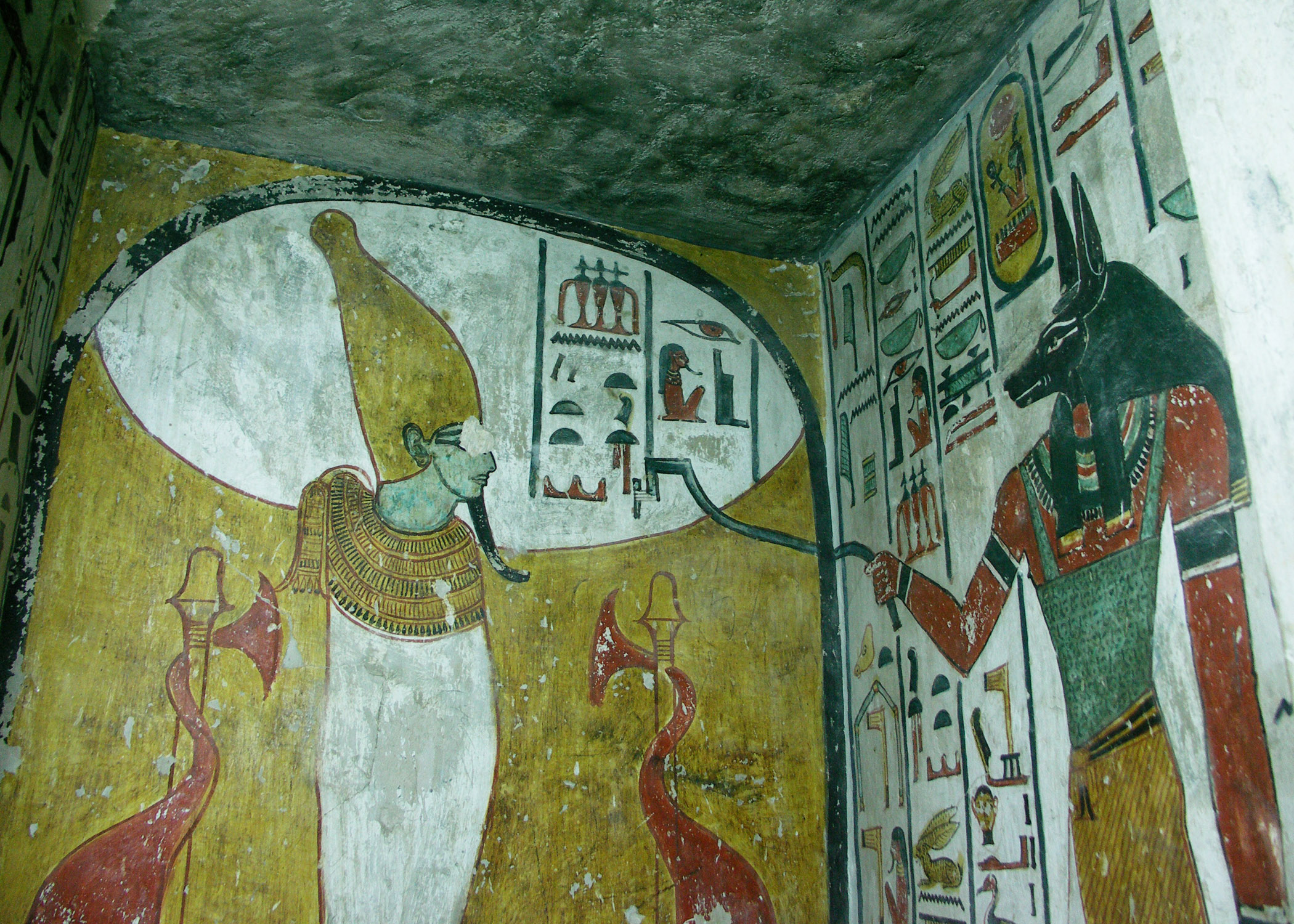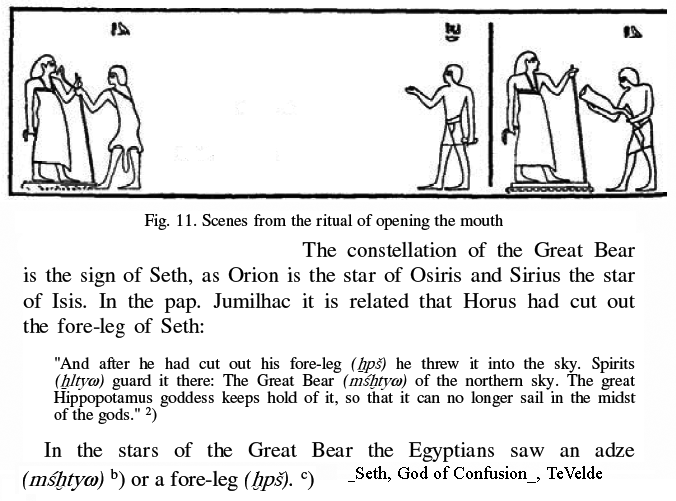|
(From info card): "The examples displayed here come from nine different deposits excavated in and around the temple of Hatshepsut at Deir el-Bahri, one by the British Egypt Exploration Fund, two by Lord Carnavon and Howard Carter, and eight by The Metropolitan Museum of Art... "Many of the objects are inscribed. A short version consists of the name of Hatshepsut. The longer version reads: 'She [Hatshepsut] made (it) as her monument for her father [the god] Amun, at the time of the 'Stretching of the Cord' upon Amun Holy of the Holies.'" |

The Adze in Use:

Anubis, about to open 'Osirus-Seti I's' mouth with the adze
(From Seti I's tomb, photo credit William Petty)
The adze has associations with the god Set
"In the stars of the Great Bear the Egyptians saw an adze (mshtyu) or a fore-leg (hps)"
(Text TeVelde, Illustration Ann Macy Roth)
From _Seth, God of Confusion_, page 88![]()
"the metal which came forth from Seth" is "bj3 - meteoric iron"
(Source, Ann Macy Roth "Opening of the Mouth Ceremony")
|
"Meteoritic iron has been found in Egypt in burials as early as the Predynastic period. It was thought to have magical significance, since the same word is used for 'marvel, miracle'. That this material came from 'falling stars' was apparently well understood by the Egyptians, as evidenced by the frequent use of a star determinative with the word bj3... "The adze itself theoretically had a blade of meteoritic iron and was originally and most frequently called the dw3-wr, a name that is written with a star and is clearly related to the dw3t, the place where stars are. The constellation we see as a 'Great Bear' or a 'Big Dipper' was called mshtjw by the Egyptians , and was compared to both the adze (fig 9) and the hps, the foreleg of an ox (fig.10)" (Roth, "Fingers, Stars, and the 'Opening of the Mouth': the Nature and Function of the Ntrwj-blades", page 70) "Farouk el Baz has suggested that a 4-kilometre-wide crater south-west of Dakhla Oasis is meteoric in origin."(Ibid, page 72) The Dakhla (Dakhle, Dakhleh) oasis was long associated with the god Set. Perhaps Plutarch's description of Set, "with a blow he broke through his mother's side and leapt forth." (tranlation via TeVelde) is referring to that iron meteor tearing itself through the heavens, his mother being Nut (aka Nuit), the sky goddess. "Traces of Seth-worship seem to have been found outside Egypt, in the oasis of Dakhleh as late as the reign of the Roman emperor Vespasian" (TeVelde, _Seth, God of Confusion_, page 140) "In the temple of Deir el Hagar in the oasis of Dakhle, Vespasian offers flowers to Seth and Nephthys."(Ibid, page 16) |


